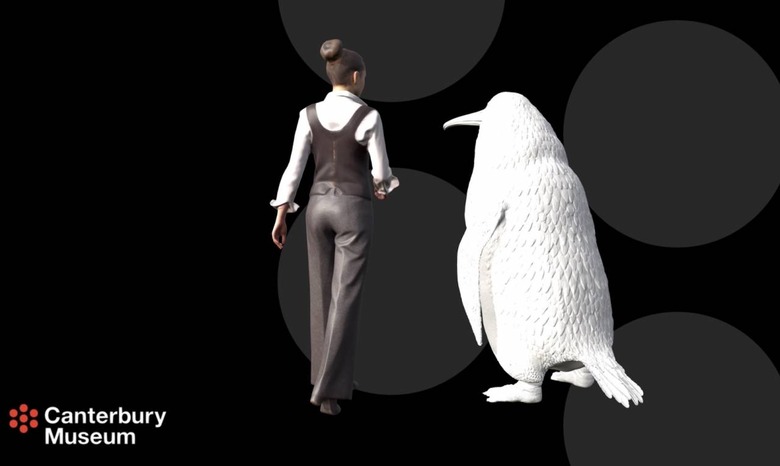This Human-Sized "Monster" Penguin Is Massively Adorable
A human-sized penguin, larger than any current species, has been identified from fossils, the latest discovery from an area gaining a reputation as being rich in previously-unknown remains. Over five feet in height, the Crossvallia waiparensis – dubbed the monster penguin – was once active in New Zealand, during the Paleocene Epoch.
That was between 66 and 56 million years ago, but it was only in 2018 that the bones were spotted at the Waipara Greensand fossil site in North Canterbury. In a paper published this week, researchers from Canterbury Museum and Senckenberg Natural History Museum in Frankfurt, Germany concluded that they did indeed represent a previously-unknown species.
It was hardly a subtle one, either. Of the currently active penguin species, the Emperor Penguin is the tallest. They can reach close to four feet in height, but these new monster penguins would tower over them by more than a foot. They'd also be heavier, too, potentially exceeding 170 pounds.

Though surprising, the discovery is actually the second ancient giant penguin to be identified. "It further reinforces our theory that penguins attained a giant size very early in their evolution," Dr Vanesa De Pietri, Canterbury Museum Research Curator Natural History and one of the authors of the study, says.
It's not just the height that differentiates C.waiparensis from modern penguins, however. Like fellow Paleocene species Crossvallia unienwillia, identified from a partial skeleton located in Antarctica back in 2000, the monster penguins have markedly different leg bones. Researchers suggest that it could be down to a greater use of the legs in swimming, or that unlike modern penguins the monster forebears didn't stand upright.
The Waipara Greensand site has proved rich in ancient penguin fossils, and this latest discovery is in fact the fifth to be identified there. Similarities between fossilized remains in New Zealand and Antarctica, meanwhile, underscore the significant climate differences between the Paleocene Epoch and today.
"When the Crossvallia species were alive, New Zealand and Antarctica were very different from today," Dr Paul Scofield, Canterbury Museum Senior Curator Natural History and an author on the study, says. "Antarctica was covered in forest and both had much warmer climates."
